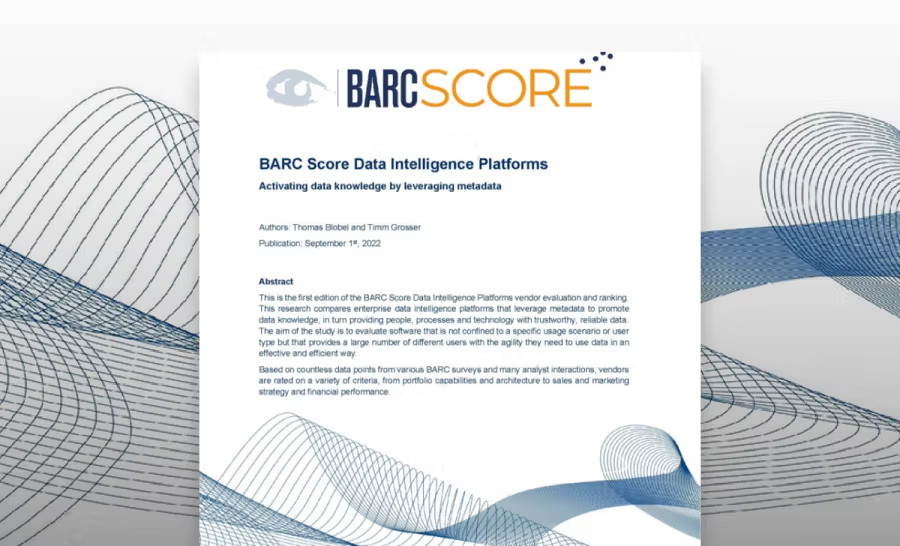Fueling data insights with the Collibra and Tableau integration

It’s no secret that data is the fuel that powers almost every facet of an organization. But to take advantage of the diverse, dynamic and distributed nature of data, and the energy (value) it holds, it has to be harnessed and understood. This is where the integrated engine comprised of Collibra and Tableau provides the catalyst to turn data into the trusted insights needed to drive smarter business decisions. Tableau helps organizations to be more data-driven through the power of analytics, and Collibra empowers them to know where to find the right, trusted data and understand its context.
In today’s data landscape rarely is there a shortage of data and reports. The bigger problem is trying to wrap your arms around what data you do have. Often the reports a user is looking for are difficult to find in a haystack of other irrelevant data, or the data may be completely siloed across various business units unbeknownst to the user. If a user does find the data that “looks” like what they need, it can be difficult to understand its business context—how does one know where the data came from, what are the definitions of the terms and metrics in the report? When key business decisions are influenced by these reports the quality and accuracy of the data are critical. Not knowing the lineage of the data, whether it’s stale, or if it’s been certified can only lead to poor business outcomes.
This may sound like a lot of doom and gloom, especially with the ocean of data from Tableau dashboards and reports that are being created by enterprises every day. But there is a solution to this problem. This is where the deep integration between Collibra and Tableau can keep your organization sailing at full speed.
It all starts with connecting to Tableau Server or Tableau Online, and the published and embedded data sources that are used within Tableau. Once all available data sources, that are either embedded or published data sources in Tableau, are ingested into the data catalog they can be profiled and classified so that users can search for the reports they need, and understand the business context of what they’re looking for.
You can’t understand what you can’t see, and that’s why visibility is perhaps the most important aspect of the integration. It extracts lineage information to provide a complete view of Tableau data. With both business and technical lineage, business users can find the information and insight they need for their purposes, while data engineers and architects can drill down with deeper analysis of the data.
Armed with this visibility organizations can now start answering many of the questions related to where the data came from, who uses it, and is it current. For all Tableau data you can get an overview of the asset including attributes, responsibilities, and relations. You’ll know what reports it may be grouped with and what other reports are using the data. With a visual representation you can also quickly see the end-to-end lineage of the data and identify what data sources it came from and what report it’s used in. A user-friendly diagram together with automated stitching also helps a user better understand the relationship between the data, source elements, and target elements.
As part of Collibra’s collaborative platform users can also participate in strengthening the trustworthiness of the data. For example, they can rate the quality of a data set with an easily understood star-rating that other users can review as they’re searching for data. Users can also provide comments that give more detail into whether they validated the attributes and columns in a particular worksheet. By bringing together all these elements of knowledge, a foundation of trust can now support the data.

The Tableau integration also helps to improve overall governance and empower a wider range of users to ingest data through the Tableau Explorer role. Now users only have access to the data related to their job role, which helps prevent potentially risky access to the Tableau API.
Security is also bolstered by enabling credentials to be stored on-premises within the organization’s secure environment. Risk is further reduced by relying on personal access tokens to run automated tasks rather than a username and password, which can more easily be compromised.
***
Tableau provides tremendous value to enterprises with a best of breed analytics platform, but together with Collibra organizations can ensure they’re getting the right data to drive the right business insights. With Collibra, data users can see the full context of their Tableau data so that they can better understand and trust this data. In addition, with governance in place, enterprises can encourage data democratization, while also ensuring only the right people have access to certain data. Overall, this integration will keep your organization on track to achieving data intelligence.
Related articles

Data IntelligenceJanuary 27, 2022
Accelerate IFRS-17 Compliance with Data Intelligence Platform

Data IntelligenceSeptember 27, 2022
Collibra is a Market Leader in first-ever BARC Data Intelligence Platform Vendor Evaluation

Data IntelligenceOctober 28, 2022
The must-have checklist for maximizing the value of your data catalog and governance investments with Collibra

Data IntelligenceMarch 10, 2022
Improve data literacy and data sharing in government
Keep up with the latest from Collibra
I would like to get updates about the latest Collibra content, events and more.
Thanks for signing up
You'll begin receiving educational materials and invitations to network with our community soon.
